Potřebujeme váš souhlas k využití jednotlivých dat, aby se vám mimo jiné mohly ukazovat informace týkající se vašich zájmů. Souhlas udělíte kliknutím na tlačítko „OK“.
ASTM D6841-08
Standard Practice for Calculating Design Value Treatment Adjustment Factors for Fire-Retardant-Treated Lumber
Automaticky přeložený název:
Standardní praktiky pro výpočet design hodnota nastavení Léčba faktory pro ohnivzdorný léčených Lumber
NORMA vydána dne 1.9.2008
Informace o normě:
Označení normy: ASTM D6841-08
Poznámka: NEPLATNÁ
Datum vydání normy: 1.9.2008
Kód zboží: NS-36742
Počet stran: 7
Přibližná hmotnost: 21 g (0.05 liber)
Země: Americká technická norma
Kategorie: Technické normy ASTM
Kategorie - podobné normy:
Ohnivzdornost stavebních materiálů a prvků
Dřevo. Kulatina na řezivo. Řezivo
Anotace textu normy ASTM D6841-08 :
Keywords:
design values, fire-retardant, fire-retardant treatment, lumber, mechanical properties, strength property, thermal effects, Ambient temperature, Clear wood evaluation/testing, Compression parallel to grain, Compression testing--wood/wood products, Design value treatment adjustment factors, Extreme fiber (in bending), Fire-retardant-treated wood/wood-base materials, Horizontal shear, Lumber, Mechanical properties, Modulus of elasticity, Strength--wood materials/applications
Doplňující informace
| Significance and Use | ||||||
|
Fire-retardant-treatments are used to reduce the flame-spread characteristics of wood. Chemicals and redrying conditions employed in treatments are known to modify the strength properties of the wood product being treated. This practice gives procedures for fire-retardant chemical manufacturers to use to calculate the effects of their treatment on lumber used in normal and elevated temperature service conditions. The effect of fire-retardant treatments on the strength of lumber used in roof framing applications is time related. In this practice, the cumulative effect on strength of annual thermal loads from all temperature bins is increased 50 times to establish treatment adjustment factors for fire-retardant treated lumber roof framing. The procedures of Test Method D 5664 employ an elevated temperature intended to produce strength losses in a short period of time. Although the exposure is much more severe than that which occurs in an actual roof system, the chemical reactions that occur in the laboratory test are considered to be the same as those occurring over long periods of time in the field. Treatment adjustment factors developed under this practice apply to lumber installed in accordance with construction practices recommended by the fire-retardant chemical manufacturer which include avoidance of direct wetting, precipitation or frequent condensation. Application of this practice is limited to roof applications with design consistent with 1.3. |
||||||
| 1. Scope | ||||||
|
1.1 This practice covers procedures for calculating treatment adjustment factors to be applied to design values for fire-retardant-treated lumber used at ambient temperatures [service temperatures up to 100°F (38°C)] and as framing in roof systems. 1.2 These design value treatment adjustment factors for the properties of extreme fiber in bending, tension parallel to grain, compression parallel to grain, horizontal shear, and modulus of elasticity are based on the results of strength tests of matched treated and untreated small clear wood specimens after conditioning at nominal room temperatures [72°F (22°C)] and of other similar specimens after exposure at 150°F (66°C). The test data are developed in accordance with Test Method D 5664. Guidelines are provided for establishing adjustment factors for the property of compression perpendicular to grain and for connection design values. 1.3 Treatment adjustment factors for roof framing applications are based on computer generated thermal load profiles for normal wood roof construction used in a variety of climates as defined by weather tapes of the American Society of Heating, Refrigerating and Air-Conditioning Engineers, Inc. (ASHRAE). The solar loads, moisture conditions, ventilation rates, and other parameters used in the computer model were selected to represent typical sloped roof designs. The thermal loads in this practice are applicable to roof slopes of 3 in 12 or steeper, to roofs designed with vent areas and vent locations conforming to national standards of practice and to designs in which the bottom side of the roof sheathing is exposed to ventilation air. For designs that do not have one or more of these base-line features, the applicability of this practice needs to be documented by the user. 1.4 The procedures of this practice parallel those given in Practice D 6305. General references and commentary in Practice D 6305 are also applicable to this practice. 1.5 The values stated in inch-pound units are to be regarded as standard. The SI units listed in parentheses are provided for information only and are not considered standard. 1.6 This standard does not purport to address all of the safety concerns, if any, associated with its use. It is the responsibility of the user of this standard to establish appropriate safety and health practices and determine the applicability of regulatory limitations prior to use. |
||||||
| 2. Referenced Documents | ||||||
|
Podobné normy:
Historická
1.8.2013
Historická
1.4.2011
Historická
1.4.2011
Historická
1.4.2011
Historická
1.4.2011
Historická
1.12.2013
Doporučujeme:
Aktualizace zákonů
Chcete mít jistotu o platnosti užívaných předpisů?
Nabízíme Vám řešení, abyste mohli používat stále platné (aktuální) legislativní předpisy.
Chcete vědět více informací? Podívejte se na tuto stránku.


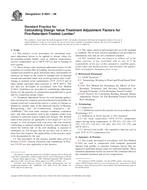
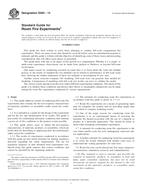 ASTM E603-13
ASTM E603-13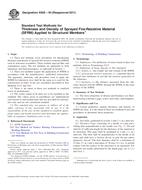 ASTM E605-93(2011)..
ASTM E605-93(2011)..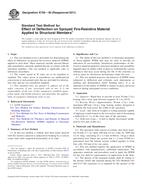 ASTM E759-92(2011)..
ASTM E759-92(2011)..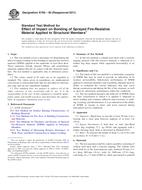 ASTM E760-92(2011)..
ASTM E760-92(2011)..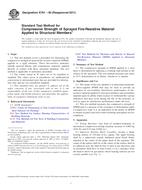 ASTM E761-92(2011)..
ASTM E761-92(2011)..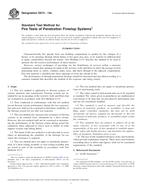 ASTM E814-13a
ASTM E814-13a
 Cookies
Cookies
